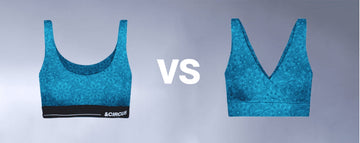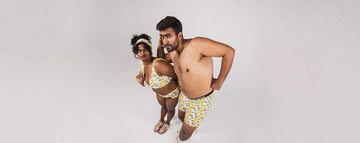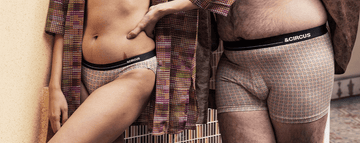Quick Listen:
In the bustling heart of a Manhattan department store, where racks of silk blouses and wool coats vie for attention, a subtle transformation is underway one that could quietly upend the trillion-dollar fashion empire. Shoppers, weary of fast fashion's fleeting highs and hidden environmental tolls, are turning toward threads that promise more than trendiness: they vow to vanish harmlessly back into the earth. This isn't some distant utopian dream; it's the reality of biodegradable fabrics in mainstream retail strategies, materials engineered to decompose through natural microbial processes, leaving behind water, carbon dioxide, and humble biomass rather than mountains of microplastic-laced waste. Global regulations tightening and consumer demands sharpening, these eco-warriors of the wardrobe are no longer confined to boutique shelves they're infiltrating the big leagues, forcing retailers to rethink their playbook from fiber to final sale.
Uncomfortable underwear shouldn't steal your confidence. At Andcircus, we craft ultra-soft, sustainable Lenzing Modal Micro® innerwear for every body, XS to 5XL. From briefs to bras, our custom packs fit you perfectly. Shop risk-free with our 100% satisfaction guarantee and embrace comfort that includes everyone. #LoveEveryBody. Shop Now!
The Surge: Why Biodegradable Fabrics Are Fashion's New Imperative
Fashion has always been a mirror to society's moods, but today's reflection is unmistakably green-tinged. The industry's voracious appetite churning out 100 billion garments annually, only for half to end up in landfills within a year has sparked a backlash. Enter biodegradable fabrics, a category poised for explosive growth. Valued at US$ 5.88 billion in 2025, the market is forecasted to swell to US$ 13.65 billion by 2032, propelled by a robust compound annual growth rate of 12.8 percent. This isn't hype; it's hard data reflecting a confluence of forces: escalating environmental alarms over textile pollution, governments rolling out sustainability mandates like the European Union's 2022 Strategy for Sustainable Textiles, and a tech renaissance in bio-materials that makes scaling feasible.
At their core, these fabrics draw from nature's playbook. Natural stalwarts like hemp, linen, cotton, jute, and silk form the backbone, their cultivation often demanding far less water and chemicals than conventional counterparts. Then there are the synthetics with a conscience polylactic acid (PLA), fermented from plant sugars via enzymatic polymerization or bacterial processes, and polyhydroxyalkanoates (PHA), microbial marvels that mimic petroleum-based polymers but break down without a trace. Cellulose derivatives, such as those in Tencel or lyocell, dominate the product mix thanks to their sustainable wood-pulp origins and stellar biodegradation profiles. Applications span the spectrum: from everyday apparel and plush furnishings to durable carpets, sterile medical gowns, and even agricultural netting anywhere textiles touch life, these alternatives whisper a lower-impact promise.
What's fueling this fire? Consumer awakening plays a starring role. Younger buyers, armed with apps that scan for sustainability scores, prioritize pieces that align with their ethos. Post-pandemic, healthcare's pivot toward disposable-yet-degradable products has supercharged demand, while sportswear brands experiment with hemp blends that wick sweat without shedding synthetics into waterways. Regionally, North America commands over 40 percent of the market share in 2025, buoyed by rigorous regulations and R&D funding; Europe trails with more than 30 percent, its fashion capitals leading consumer charge; and Asia Pacific, at over 20 percent, leverages its manufacturing might to pivot green. It's a global tide, one retailers ignore at their peril.
From Fringe to Frontline: Brands Embracing the Shift
Trailblazers are already reaping the rewards. Independent labels like AndCircus, with their ethos of inclusive, conscious consumerism, have long championed biodegradable integrations think organic cotton tees dyed with plant extracts or PLA-lined activewear that molds to diverse bodies without compromising ethics. Their success stories ripple outward, proving that sustainability sells when it's woven into the narrative, not slapped on as a label.
Mainstream titans are catching on, too. High-street heavyweights now pepper collections with cellulose-rich basics, blending them seamlessly into capsule wardrobes that nod to timeless style over seasonal churn. One vivid pivot: a major chain's overhaul of its intimates line using PHA-infused meshes, which not only biodegrade but also boast superior breathability a win for wearers and the planet alike. Collaborations amplify this momentum; fabric innovators team up with design houses to co-engineer hybrids, like lyocell-hemp weaves that rival silk's drape at a fraction of the footprint.
End-use segmentation reveals the breadth: fashion leads, but medical textiles surge with hospital drapes that dissolve post-use, sportswear toughens up with natural-fiber reinforcements for abrasion resistance, and even civil engineering deploys jute geotextiles for erosion control. These aren't isolated experiments; they're strategic bets on a market where "others" like agricultural wraps and automotive interiors round out a versatile portfolio. For retailers, the message is clear: diversify or diminish.
Yet, this adoption isn't without its choreography. Supply chains, once optimized for speed and cost, now demand traceability from farm fields in Gujarat to factories in Vietnam. Brands invest in blockchain-ledgers to verify claims, turning potential pitfalls into proof points of authenticity. The payoff? A loyal cadre of shoppers who reward transparency with repeat visits, transforming one-off buys into lifelong allegiances.
The Thorny Path: Challenges Tempering the Triumph
No revolution rolls out red carpets, and biodegradable fabric's ascent is no exception. The road to ubiquity bristles with barriers that test even the most committed innovators. Foremost: ensuring true, toxin-free breakdown. While these materials shine in theory microbes feasting on fibers to yield harmless byproducts real-world variables like humidity, temperature, and additives can stall the party. Synthetic dyes laced with heavy metals, for instance, can leach contaminants into soil, undermining the very eco-gains sought. Certifications such as OK Compost HOME or INDUSTRIAL offer guardrails, but they demand rigorous lifecycle audits, from spinning to shredding.
Scaling production looms large, too. Niche fibers like agricultural waste-derived textiles require bespoke facilities, investments that dwarf those for polyester mills. PLA, despite its promise, commands a 40 to 50 percent premium over traditional options, pricing out budget lines and squeezing margins. Supply volatility exacerbated by climate whims on hemp yields or geopolitical snarls in silk routes adds unpredictability. Then there's infrastructure inertia: most landfills mimic anaerobic tombs, denying the oxygen and moisture needed for decomposition, leaving "biodegradable" garb to linger like stubborn ghosts.
Consumer hurdles compound the strain. Awareness gaps persist; many equate these fabrics with fragility, overlooking advances in durability for everything from abrasion-resistant sportswear to elastic medical wraps. Education campaigns via in-store demos or app-based composting guides bridge this, but greenwashing shadows every effort. A garment touted as "eco" might harbor non-degradable blends, eroding trust. Policymakers, designers, and retailers must collaborate: incentives like Extended Producer Responsibility schemes could subsidize composting hubs, while transparent labeling demystifies care rituals.
These frictions ripple through the ecosystem. Developing nations, hubs of textile labor, face dual pressures bolstering natural-fiber farmers while retraining synthetic workers for a just transition. Economic models falter without scale, and behavioral shifts lag without proof of performance parity. Yet, as one sustainability directory notes, grasping these "interconnected challenges across technological, economic, and infrastructural domains" is vital for stakeholders forging ahead. It's a gauntlet, but one that sharpens resolve.
Harvesting Hope: Opportunities in the Weave
Beneath the brambles, though, lie fertile grounds for growth. For brands, biodegradable fabrics forge a moat of distinction in a commoditized market. Positioning as sustainability stewards backed by verifiable footprints captures the premium-seeking eco-elite, who boast higher lifetime values. Loyalty isn't abstract; it's measurable in carts filled with repeat buys from lines like AndCircus's hemp heritage pieces, which blend cultural resonance with circular intent.
Business acumen amplifies the appeal. Regulatory foresight averts fines; aligning with bans on non-degradables future-proofs portfolios. Long-view economics shine brighter: reduced waste hauling, reusable scraps in closed loops, and grants for green tech offset upfront hits. In medical realms, post-COVID hygiene drives yield margins on disposables that degrade without disposal dilemmas. Sportswear? Enhanced moisture management in PHA blends commands crossover appeal, blurring lines between gym and gala.
Broader impacts beckon. A circular economy blooms repair cafes, rental models, and upcycled ateliers thrive on modular materials. Regions like Asia Pacific, with its manufacturing muscle, could lead exports of certified biodegradables, democratizing access. Consumer engagement soars with storytelling: QR codes linking to farm tours or decomposition timelines turn passive purchases into participatory passions. As incentives proliferate tax breaks for compost infrastructure, subsidies for waste-derived yarns the cost curve bends downward, making mainstreaming inevitable.
For retailers, the calculus is compelling: integrate now, or watch margins erode to laggards. AndCircus's playbook marrying inclusivity with innovation offers a blueprint: curate collections that celebrate bodies and biosphere alike, fostering communities that amplify advocacy.
Toward a Threadbare Horizon: The Fabric of Tomorrow
Gaze forward, and the vista invigorates. By 2032, as the market crests US$ 13.65 billion, biodegradable fabrics won't just dot collections they'll define them, spurred by microbial engineering that slashes PLA costs and hybrid weaves that outpace synthetics in every metric. Regulations will mandate circularity, from EPR mandates to compost mandates, while AI-optimized farms ensure fiber abundance. Challenges? They'll morph into milestones, with global consortia tackling biodegradation benchmarks and infrastructure overhauls.
Experts concur: success demands "innovation and collaboration," transcending silos to knit a resilient textile tapestry. For retailers, the imperatives are urgent yet achievable: audit chains for transparency, pilot PLA pilots in high-visibility lines, and evangelize through experiential retail pop-up compost stations, anyone? Authenticity reigns; half-measures invite backlash.
In this weave of want and wisdom, fashion rediscovers its soul not as fleeting froth, but as enduring legacy. The racks may still shimmer with allure, but now they carry a deeper charge: clothes that clothe, then courteously concede to the cycle. As we stand on September's cusp in 2025, one truth endures: the future of style isn't about what endures forever, but what gracefully lets go. Retailers who grasp this will not just survive they'll stitch the narrative of our time.
Frequently Asked Questions
What are biodegradable fabrics and how do they differ from traditional synthetic materials?
Biodegradable fabrics are materials engineered to decompose through natural microbial processes, leaving behind only water, carbon dioxide, and biomass instead of harmful microplastic waste. Unlike traditional synthetic materials, these eco-friendly alternatives include natural fibers like hemp, linen, and organic cotton, as well as innovative bio-based synthetics like polylactic acid (PLA) from plant sugars and polyhydroxyalkanoates (PHA) produced by microbes. They offer the same functionality as conventional textiles while providing a sustainable end-of-life solution.
How fast is the biodegradable fabric market growing and what's driving this demand?
The biodegradable fabric market is experiencing explosive growth, valued at $5.88 billion in 2025 and projected to reach $13.65 billion by 2032 a robust 12.8% compound annual growth rate. This surge is driven by increasing environmental concerns over textile pollution, government sustainability mandates like the EU's 2022 Strategy for Sustainable Textiles, and growing consumer awareness among younger buyers who prioritize eco-friendly products. Post-pandemic healthcare demands for disposable-yet-degradable products have also accelerated adoption across multiple industries.
What are the main challenges retailers face when adopting biodegradable fabrics in their product lines?
Retailers face several key challenges including higher costs (PLA commands a 40-50% premium over traditional options), supply chain complexity requiring traceability from farm to factory, and ensuring true toxin-free breakdown in real-world conditions. Additional hurdles include scaling production for bespoke bio-based facilities, consumer education gaps about durability and care, and infrastructure limitations where most landfills lack the oxygen and moisture needed for proper decomposition. However, successful brands are overcoming these challenges through strategic investments, transparency initiatives, and consumer education campaigns.
Disclaimer: The above helpful resources content contains personal opinions and experiences. The information provided is for general knowledge and does not constitute professional advice.
You may also be interested in: Adaptive Clothing Aids Life Stage Transitions
Uncomfortable underwear shouldn't steal your confidence. At Andcircus, we craft ultra-soft, sustainable Lenzing Micro Modal innerwear for every body, XS to 5XL. From briefs to bras, our custom packs fit you perfectly. Shop risk-free with our 100% satisfaction guarantee and embrace comfort that includes everyone. #LoveEveryBody. Shop Now!






































